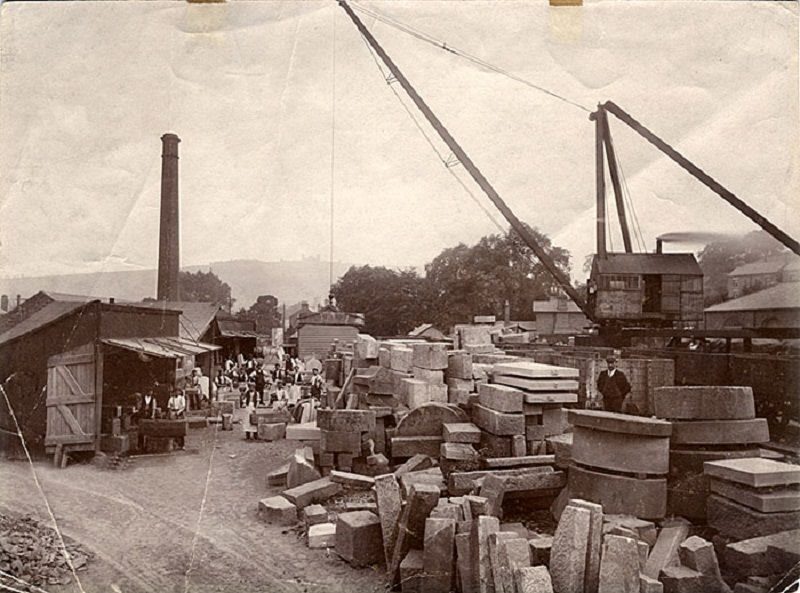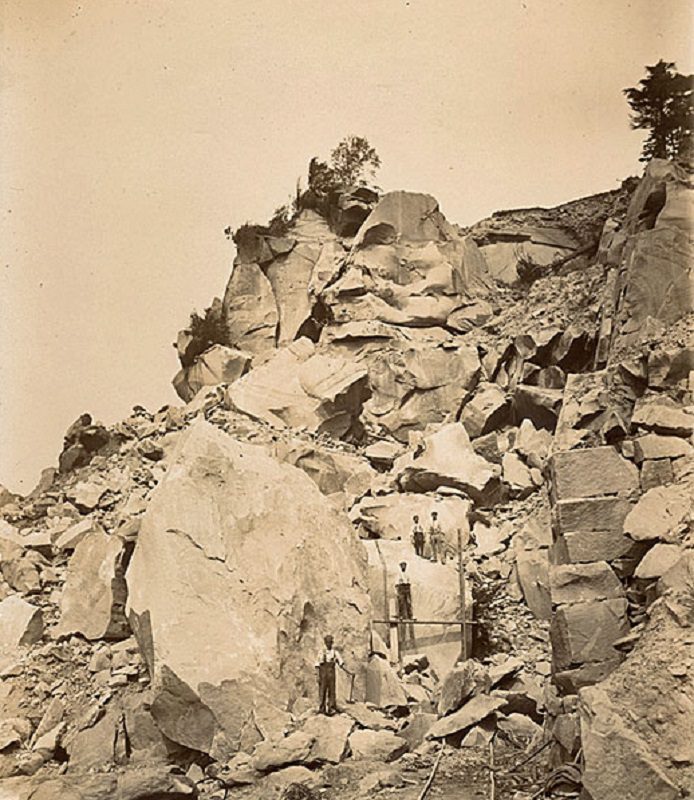The impressive scale of Brooklyn’s stone yard in the nineteenth century may be seen in an old photograph in which workmen in aprons stand between and even on stone slabs, while horses are ready to transport large loads. The owner of this stone courtyard is Christian F. Hommel. Read about the development of the stone processing industry in Brooklyn at brooklyn-future.
Bluestone courtyard

During the nineteenth century, Brooklyn’s construction industry relied heavily on stone yards that processed raw stone supplied from quarries outside the city. In an 1884 article, local historian Henry Reed Styles stated that there were 92 marble and stone firms in the area. Of them, 35 were stone businesses that manufactured, clad and paved stones, while the remaining were marble and granite companies that produced stones for monuments and markers.
Despite the fact that according to the historian, Christian F. Hommel’s company was not the biggest one functioning at the time, the man added it to the list and noted that it was based on Grand Street. According to records such as city guides and newspaper reports, Hommel operated his own stone business until at least 1876. Its address was listed as Metropolitan and Grand, or simply Newtown Creek, although from 1879, the business has been described as the bluestone courtyard on Grand Street at the junction of Morgan Avenue.
Stone processing as part of the industry

An 1888 Sanborn Map depicts a blue stone courtyard and an office at this crossroads. It leads to Grand Street, a one-story wooden stone-cutting facility that runs along Devoe Street in the back of the property, near the buildings. The whole map depicts a stone yard in the heart of a large industrial neighborhood, with a chemical plant, glass factory and cable car nearby. The Newtown Creek industrial hub was only a few blocks away.
The photograph allows you to briefly envision the operation of a stone workshop, as well as the amount of labor and stone required for Brooklyn’s construction. The great level of detail in the albumin silver created on the negative of the glass plate lets you see inside the open office door with a wooden frame. The three men in the photo appear to be carefully posing, with two of them dressed more formally. Perhaps it was Hommel himself who got into the picture, demonstrating his enterprise.
Bluestone everywhere

The entrepreneur’s career was tragically cut when he died in 1893, aged 44. His firm continued operations when his widow, Ellen C. Hommel, partnered with coworker James H. Harnden to form Hommel & Harnden. The company’s advertisements consistently highlighted bluestone for sidewalks, curbs, lintels, window sills and other construction-related applications, with references to the Bluestone of Ulster County’s North River, native to Hommel and Harnden, as well as the Bluestone of Wyoming Valley and Warsaw.
In 1905, the company was renamed James H. Harnden Company but continued to operate from the same site, eventually appearing in city guides with the full address 991 Grand Street. After Harnden died in 1914, the stone yard continued to function until at least the mid-1920s.
The office is now home to a modest brick garage. Hommel’s client list is largely unknown, but pieces of bluestone from his yard are still likely to be found on Brooklyn streets.